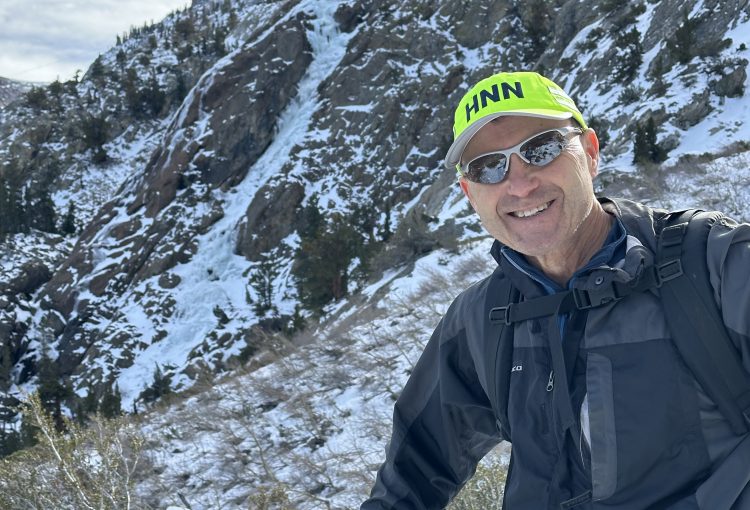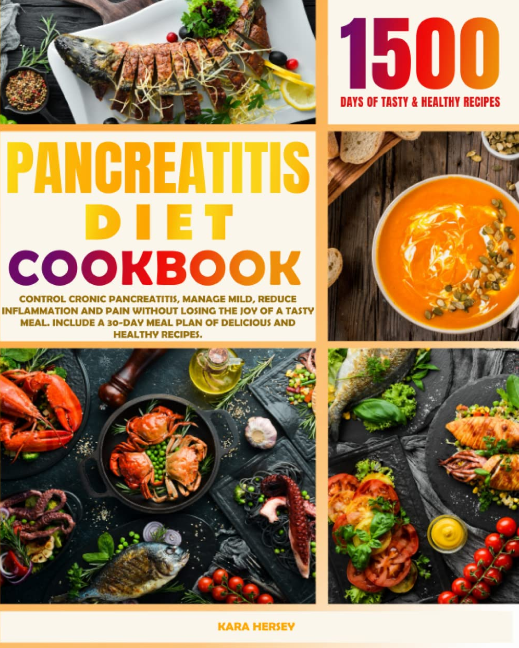ROGER ROYSE’S DECISION TO TAKE AN EARLY DETECTION TEST MAY HAVE SAVED HIS LIFE
Written By Julia Brabant
March 2024
Diagnosed: July 2022
Status: Continuing His Fight
For Silicon Valley, California’s Roger Royse, a routine airplane read turned into a pivotal moment that would change the course of his life. While flipping through the pages of Peter H. Diamandis’ “Life Force: How New Breakthroughs in Precision Medicine Can Transform the Quality of Your Life and Those You Love,” during a flight, Roger stumbled across an article discussing Galleri, a first-of-its-kind multi-cancer early detection test. Intrigued, he decided to take the test, unaware that it would reveal a silent threat within him – pancreatic cancer.
Roger’s formal diagnosis of Stage 2B borderline resectable pancreatic cancer came in July 2022, after he took the Galleri blood test and underwent an MRI based on its findings.
“Nothing will focus your attention quite like a doctor saying you’re going to die of cancer,” he said. “My whole word view shifted in 12 hours. The day before my diagnosis, I had 100 problems. The day after, I had just one.”
Roger reached out to a radiologist in Southern California to see if he might be a candidate for radiation, and while the radiologist determined he wasn’t, he did have something he wanted to say to Roger.
“When the radiologist called, he told me I was the luckiest person he’d ever met,” Roger said. “Because of where the cancer was and how it was growing, I’d never have had symptoms. I never would have known about this until I was at a much more advanced stage.”
Roger had no other obvious symptoms leading up to his diagnosis, but a type of technology known as Sequence-Topology Assembly for Multiplexed Profiling (STAMP), which seeks to detect and classify cancer cells and determine the aggressiveness of the disease, revealed two key findings.
Roger’s STAMP report showed that he had an ALK-KANK driver mutation and a SMAD4 fusion. Given the stage of Roger’s cancer and the information contained in his STAMP report, Roger’s care team decided to start him on chemotherapy with the hope of shrinking his tumor enough to make surgery a possibility. He underwent three months of chemotherapy using 5-Fluorouracil and had surgery in November 2022.
Subsequent sequencing of the removed tumor, which assesses the tumor’s genetic makeup, showed that chemo had “no treatment effect.” Sequencing also revealed that Roger had lymph node involvement and poor differentiation, the latter of which means the cancer is more likely to spread. The report also showed perineural invasion, meaning the cancer cells were growing inside or alongside a nerve. It also revealed extensive residual cancer and no evident tumor regression, leading to a poor prognosis.
Roger’s oncologists believed his chances of a cancer recurrence were high, with four different doctors placing his chances somewhere between 80% and 100%. More recent tests showed circulating tumor cells, but a different oncologist Roger saw questioned the accuracy of those test results, considering them indeterminate.
“Every patient has to decide if they want to live like they have one day left, or 20 years left,” he said, of how he handles the possibility of his cancer returning. “I’m going to live like I have 20 years left.”
Because of Roger’s odds of a recurrence, his medical team decided to try a different chemotherapy regimen, starting him on Gemcitabine. He continued that regimen until February 2023, at which point tests showed no remaining evidence of disease in his body aside from the circulating tumor cells.
While Roger followed the U.S. standard of care for someone with his condition, having chemotherapy and surgery, he also explored other avenues to build strength and enhance his body’s immune response. He started receiving high doses of vitamin C and intravenous oxygen. He also had an NK cell and dendritic cell expansion and a neoantigen peptide vaccine from a clinic in Tokyo, Japan. Through an FDA-expanded access application, Roger is also part of a neoantigen vaccine trial in San Francisco, California through the Julie Leandro Foundation, a nonprofit that seeks to expand treatment options for people fighting cancer.
Roger also strives to live a healthy lifestyle, following an anti-cancer diet, getting regular, heavy exercise and undergoing intermittent fasting. He also has hyperbaric oxygen therapy, exercise with oxygen therapy and continuous monitoring of his glucose levels. Cold plunges and heat therapy are also part of his repertoire, as is seeing naturopaths, who test Roger’s mycotoxins, metals and pathogens and monitor his genetic markers, microbiome, and oral and metabolic health.
Roger’s naturopaths determined that he had extremely high levels of carcinogenic mycotoxins in in his body, which Roger suspects may have come from his use of a moldy coffeemaker and a deficient microbiome. He blames the latter on his former diet, which included a lot of carbohydrates and highly processed foods. Roger also had low levels of vitamin B, vitamin D and magnesium, all of which increase one’s risk of pancreatic ductal adenocarcinoma.
Roger also has a plan in place, should his disease show any signs of progression. He remains in regular touch with his care team, and his biomarkers suggest that certain pharmacological interventions, such as checkpoint inhibitors, PARP inhibitors, antibody drug conjugates and tyrosine kinase inhibitors, may prove beneficial given his precise tumor makeup and test results.
Roger also remains active in an online group, Cancer Patient Lab, which he says is a great resource for those who want to consider treatment options that go beyond the current U.S. standard of care. The group invites guest speakers to share their knowledge and expertise, and people living with cancer also get to communicate with one another, sharing insights, successes and encouragement.
Group members can also store their medical records in documents in an online folder, enabling them to engage with service partners like Massive Bio, Cancer Commons, CureMatch, Genomic Expression, Shepherd Therapeutics and mProbe.
Roger believes that groups like Cancer Patient Lab play an integral role in raising awareness about symptoms, treatment options and support resources available to those facing cancer diagnoses.
“I thought I was doing everything a person needed to do to stay healthy,” said Roger. “I had no idea I was at risk for cancer. The Galleri test found this for me in the nick of time.”
Roger also recognizes the role luck played in catching his cancer relatively early on.
“When I got the diagnosis, my first thought was, ‘I just want to stay alive long enough to see my daughter graduate high school,’” he said. “It looks very likely that I’m going to see her graduate college – and probably beyond.”
While Roger feels optimistic about seeing his daughter reach these milestones, he also mentioned how much his diagnosis changed the relationship the two shared for the better. Rather than focus on surface-level topics more typical of teenagers, Roger and his daughter now discuss a wide range of philosophical and emotional subjects, creating a deeper sense of connection and understanding between them.
While he awaits the opportunity to watch his daughter don her cap and gown, Roger continues to do everything he can to strengthen his immune system and increase the chances of a positive outcome. He is participating in a ferroptosis regimen, which is a process where iron-dependent oxidative damage overwhelms cells, damaging the cell membranes and ultimately causing those cells to die.
He is also planning an imminent return to Japan, where he’ll undergo a round of treatment intended to push his CTC, or “circulating tumor cell,” numbers down.
“My doctors here in the U.S. want me to wait until something shows up on scans,” Roger said. “But, by that point, it’ll be too late to do much about it.”
In addition to returning to Japan and undergoing ferroptosis, Roger continues to take high doses of vitamin C. He also takes Fenbendazole, a parasitic drug that shows potential for treating pancreatic cancer, and other medications and supplements, including iron, zinc, copper and selenium. While it is unclear just how much of an impact these efforts have on their own, research suggests that they work best in conjunction with other treatment avenues.
“I’m ever-mindful of the fact that this could all blow up at any moment, and knowing that makes me appreciate so much more than before,” he said. “I live much more in the moment now.”
Roger also urges other people facing pancreatic cancer to avoid putting too much faith in statistics, many of which, he says, are the result of old data and existing standards of care.
“Don’t rely on statistics,” he said. “Think of yourself as a statistic of one.”
Roger also reflected on some advice his brother gave him that he found particularly impactful.
“He said, ‘When you’re in the thick of it, you really can’t trust your own judgment,’” Roger said, noting that this is why he strives to have contingency plans in place ahead of time, should his situation take a turn.
“I’m really taking that to heart. My current strategy is to stay alive until better treatments become available,” Roger said. “In the meantime, if something might help and won’t hurt, then I’m going to try it.”




